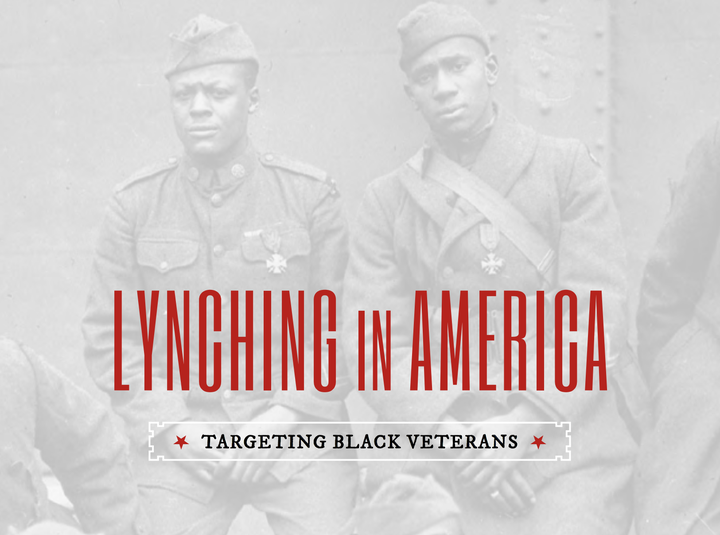President Donald Trump’s feud with professional athletes kneeling during the national anthem has reached a fever pitch, but it’s based on a premise that is ahistorical at best and dishonest at worst.
Despite Trump’s claim to the contrary, kneeling during the national anthem as a protest against racism and police brutality honors veterans who fought for a country that abused them, and Trump is pushing a false narrative to silence a peaceful protest for police accountability.
People who say that kneeling is disrespectful to those who fought for our country are not speaking on behalf of all veterans, and despite what Trump likes to tweet, race is the most relevant factor in this discussion. When Colin Kaepernick refused to stand during the national anthem in 2016, he made it clear that he was protesting American racism.
“I am not going to stand up to show pride in a flag for a country that oppresses black people and people of color,” Kaepernick said.
However, as of late Trump has twisted Kaepernick’s protest against racism as a “disgrace” to veterans.
Ignoring race now just because Trump says so is intellectually dishonest, and like Kaepernick said, America has shown a consistent pattern of oppressing black people. Yet somehow, those who disagree with the protest on behalf of veterans ignore an obvious fact.
Veterans suffered oppression in the United States.
Throughout American history, black veterans put their lives on the line for their country only to return to a nation that treated them as subhuman.

A screenshot of the title page for "Lynching in America: Targeting Black Veterans"
The Equal Justice Initiative released a 2016 report titled “Lynching in America: Targeting Black Veterans” and director Bryan Stevenson wrote:
“No one was more at risk of experiencing violence and targeted racial terror than black veterans who had proven their valor and courage as soldiers during the Civil War, World War I, and World War II. Because of their military service, black veterans were seen as a particular threat to Jim Crow and racial subordination. Thousands of black veterans were assaulted, threatened, abused, or lynched following military service.”
After World War I, black veterans returned to the violence of the Red Summer of 1919, during which black civilians and veterans alike were forced to fight against white mobs. During this time, a black veteran wearing his uniform was seen as a sign of “defiance,” and at least “13 veterans were lynched.” On August 3, 1919, a white mob lynched black veteran Christian Briggs because he “insulted” a white woman by not moving out of the way fast enough for her on the sidewalk.
Racism and police brutality toward black veterans continued after World War II. On February 8, 1946, a white conductor shot honorably discharged black marine Timothy Hood five times for removing a Jim Crow sign in Bessemer, Alabama. Instead of arresting the shooter, police chief G.B. Fant apprehended Hood. He then shot Hood in the head in the back of his car and claimed Hood reached for his hip “as if to draw a weapon”.
There was no evidence that Hood was armed, but Fant was cleared anyway.
Just four days after Hood was shot, Isaac Woodard, a black veteran who served in the Philippines, was on a Greyhound bus in Georgia and heading home after he was honorably discharged. Woodard asked the driver if he had time to use the bathroom during a stop, and the driver cursed at him. After they argued, the driver called the police who then beat Woodard and arrested him for disorderly conduct. When they arrived at the station, police chief Linwood Shull literally beat Woodard blind. At trial, Shull admitted to beating Woodard, but his attorney said suggested that South Carolina should secede from the union again if the all-white jury found him guilty.
The jury acquitted Shull.
“Negro veterans that fought in this war…don’t realize that the real battle has just begun in America,” Woodard said. “They went overseas and did their duty, and now they’re home and have to fight another struggle that I think outweighs the war.”
Black veterans also suffered abuse when they fought for equality in their own country. Hosea Williams served in World War II in the all-black unit of General George Patton’s Third Army and went home with a Purple Heart after suffering injuries that left him reliant on a cane. Then a mob of white men attacked him in his uniform for drinking out of a white-only water fountain at a Georgia bus station.
Williams helped organize the 1965 march from Selma to Montgomery, Alabama and was jailed over 125 times for his work with the Southern Christian Leadership Conference.
“I had fought in World War II,” Williams said. “And I once was captured by the German army, and I want to tell you the Germans never were as inhumane as the state troopers of Alabama.”
But not all black veterans from the Civil Rights Movement survived after returning home. Medgar Evers fought in the Battle of Normandy before becoming the NAACP’s first field officer in Mississippi in 1954, and he was a major player in the desegregation of the University of Mississippi in 1962.
On June 12, 1963, klansman Byron De La Beckwith shot Evers in the back in his own driveway, leaving him to bleed on his steps in front of his wife and children before he died at the hospital.
Two all-white juries deadlocked on Beckwith’s guilt, and he wasn’t convicted until 1994.
It’s easy to brush these incidents off as just “in the past,” but systematic racism remains an issue in our country that has survived civil rights legislation, and black veterans are no exception. In 2015, Officer Robert Olsen shot and killed unarmed, black Air Force veteran Anthony Hill in DeKalb, Georgia. Hill’s family alleged in a wrongful death suit that Hill was suffering a nonviolent mental episode due to PTSD from serving in Afghanistan. In 2016, a grand jury indicted Olsen for two counts of felony murder, two counts of violation of oath of office, and one count each of aggravated assault and making a false statement, per the Washington Post.
Unlike the previous examples, it is unlikely that Olsen knew Hill was a veteran before killing him, but Hill was one of many black people killed by police at twice the rate of white Americans in 2015 and 2016.
This is exactly what Kaepernick decided to protest.
“To me, this is bigger than football and it would be selfish on my part to look the other way,” Kaepernick said. “There are bodies in the street and people getting paid leave and getting away with murder.”
Before you tell people to stand for the flag in honor of our veterans, it’s important to ask if veterans are honored and respected equally in America. Before you say kneeling has nothing to do with race, it’s important to ask why Kaepernick and his colleagues kneeled in the first place. When you’ve asked yourself those questions, ponder if serving in the United States military has ever saved a black man from racial oppression and police brutality. Answer these questions honestly, and maybe you’ll understand why these athletes are able to kneel during the national anthem while respecting our veterans as much as anyone else.
Black veterans fought for the American flag too, and they were killed by the people they risked their lives to protect. On a scale of disrespecting our armed forces, kneeling during the anthem pales in comparison to getting beaten, shot, and lynched, but when Trump mentions veterans he neglects this context as if brushing race aside is the proper way to address a protest against racist policing. Considering Trump’s history of siding with law enforcement, even when it’s unethical, this isn’t surprising. He doubled down on the guilt of the Central Park Five despite their obvious innocence and pardoned Joe Arpaio,whose practices earned him comparisons to Bull Connor.
Instead of addressing the grievances of his citizens, Trump is attempting to hijack their protest by propagandizing its purpose. He is not defending the flag or our armed forces. He’s pushing to silence figures like Kaepernick when their protests for police accountability and equality become popular by using veterans as political tools.
Eric Reid called the accusation that kneeling protesters are anti-military a “false narrative.”
In pushing this narrative, Trump revealed why this protest is necessary by ignoring the black veterans who fall under the umbrella of oppression our professional athletes are speaking out against. Kaepernick and the NFL haven’t dishonored any veterans, but Trump has dishonored our black veterans by pretending race doesn’t matter, just for the sake of silencing black protesters. If he’s serious about honoring those who sacrificed and died for our country, he should honor those who died because of our country too. Trump should support Kaepernick’s message if he expects the American people to believe he cares about the veterans who fought overseas, but became casualties of racial oppression in their own communities due to the same violence the NFL is protesting.
Based on Trump’s track record of calling white supremacists “very fine people” and black protesters sons of bitches, holding your breath waiting for a change of heart is not advised.
